Hey all,
In a bit of a nod to the last launch of the Space Shuttle Atlantis yesterday, I picked up a copy of Universe Sandbox, a brilliant… well, sandbox game, from Giant Army. It was on sale on Steam for $5.
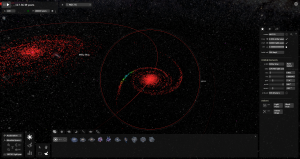
Here you can see how the gravitational force from the Milky Way is affecting this nearby galaxy in my model
I’m not sure if the word “game” is entirely relevant here; there are no objectives, no winning conditions, no opponents. Instead, you play with models of celestial objects and observe their gravitational behaviors.
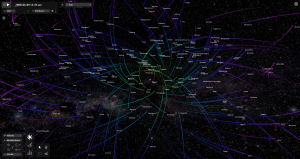
The colors of gravity! Using the different color filters, you can get a wide range of information about your celestial bodies.
It is amazing.
You have two choices when you first start playing: load one of the preset scenarios or create something entirely new from scratch. There aren’t a huge number of scenarios, perhaps ten or so, but each has its own charm. I particularly liked the Solar System model, though there is also an athletic sports one, filled with dice, tennis balls, baseballs, and bowling balls that is a lot of fun. The metaphor of the solar system as a pool table is clearly present here.
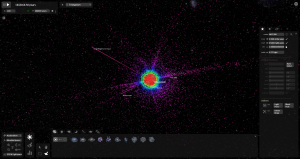
If you increase the gravity of the star by a lot, often the orbiting bodies will shooting off into space.
On the one hand, the game is so simple: plop down planets and stars and moons and even entire galaxies, adjust their mass or density to suit your fancy, and then just watch. Adding objects to your canvas is as easy as point and click, and adjusting their properties is equally easy. Sometimes the pull of gravity will create gorgeous elliptical patterns, and other times the celestial objects will smash into each other. On the other, it is so complex as the gravitational forces influence and bend the orbits; trying to predict what will happen is part of the fun. Hovering over an object will show where the object is headed, based on the current gravitational forces, but that doesn’t necessarily mean it will be a stable orbit.
To better enjoy the experience, the game comes with a number of different coloring options for the model, such as natural, by velocity, by acceleration, or by mass. This helps you to see what objects are moving or what is being pulled by other bodies. You can also set time intervals anywhere from a few seconds to millions of years at a time. These settings cause collisions and interactions to produce beautiful patterns of light.
I can really see the game having strong educational value as well as entertainment value. Just playing for a couple of hours and I was already transported back to my younger days, when I fancied myself as an astronomer. I would run a simulation for a bit, then go brush up on the definition of astronomical units. Then run the simulation a bit, and then read up on Trans-Neptunian Objects. It is a wonderful tool for getting someone excited about objects in space.
The game also has some screens that really help put the universe into perspective, such as the ability to sort the objects currently in the model by mass. Everyone knows that Jupiter is very small compared to the Sun, but seeing the size difference in three dimensions makes the experience all the more powerful.
The only issue that I have found with the game is that there are a few graphical glitches that force me to re-make my current model. It’s a bit of an annoyance, but it never made me want to put down the game.
Truly, this is a brilliant work that is beautiful, clean, and well executed: it does exactly what it set out to do, and I highly recommend it to anyone who likes science and to anyone who loves to look up to the stars… and wonder.
Cheers,
S
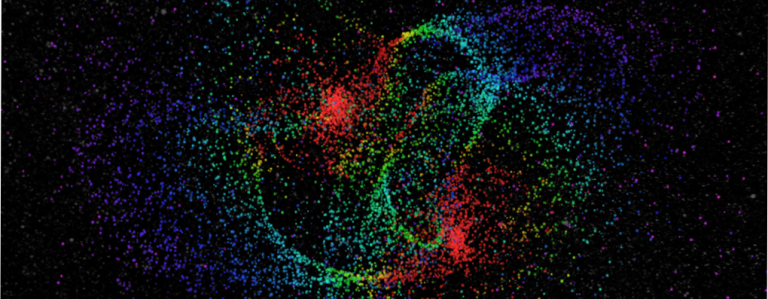
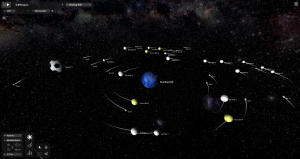


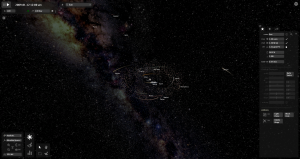
Comments
Mortron said: 10 July 2011 at 02:23
Very nice review, it’s a very fun simulator that really opens you up the the wonder of space. Bookmarked for future reference.
Sunhawk said: 10 July 2011 at 06:06
Thanks for stopping in Mortron! I hope to keep pumping out good stuff, so stay tuned! 😀